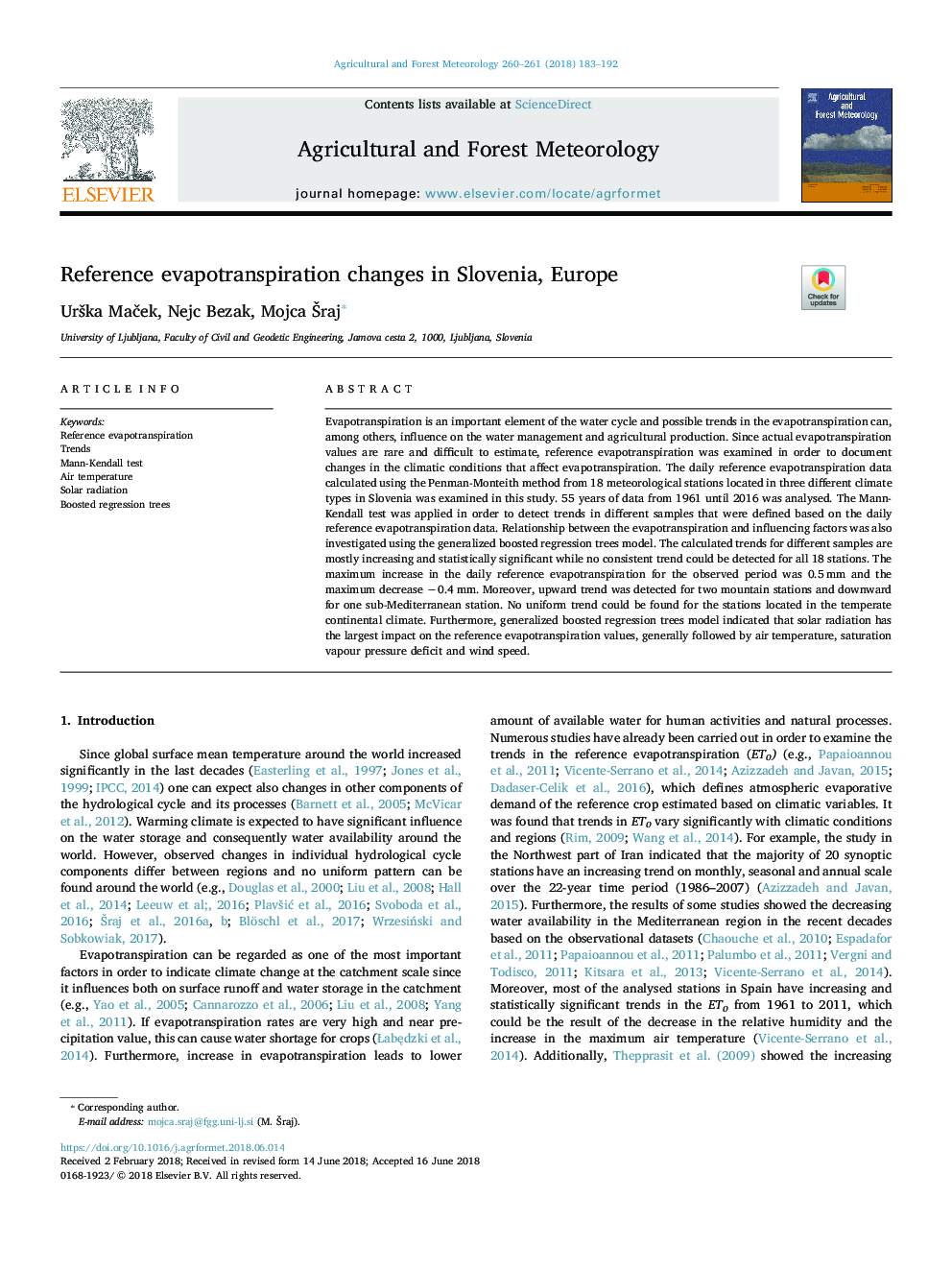| Article ID | Journal | Published Year | Pages | File Type |
|---|---|---|---|---|
| 6536613 | Agricultural and Forest Meteorology | 2018 | 10 Pages |
Abstract
Evapotranspiration is an important element of the water cycle and possible trends in the evapotranspiration can, among others, influence on the water management and agricultural production. Since actual evapotranspiration values are rare and difficult to estimate, reference evapotranspiration was examined in order to document changes in the climatic conditions that affect evapotranspiration. The daily reference evapotranspiration data calculated using the Penman-Monteith method from 18 meteorological stations located in three different climate types in Slovenia was examined in this study. 55 years of data from 1961 until 2016 was analysed. The Mann-Kendall test was applied in order to detect trends in different samples that were defined based on the daily reference evapotranspiration data. Relationship between the evapotranspiration and influencing factors was also investigated using the generalized boosted regression trees model. The calculated trends for different samples are mostly increasing and statistically significant while no consistent trend could be detected for all 18 stations. The maximum increase in the daily reference evapotranspiration for the observed period was 0.5â¯mm and the maximum decrease â0.4â¯mm. Moreover, upward trend was detected for two mountain stations and downward for one sub-Mediterranean station. No uniform trend could be found for the stations located in the temperate continental climate. Furthermore, generalized boosted regression trees model indicated that solar radiation has the largest impact on the reference evapotranspiration values, generally followed by air temperature, saturation vapour pressure deficit and wind speed.
Keywords
Related Topics
Physical Sciences and Engineering
Earth and Planetary Sciences
Atmospheric Science
Authors
UrÅ¡ka MaÄek, Nejc Bezak, Mojca Å raj,
